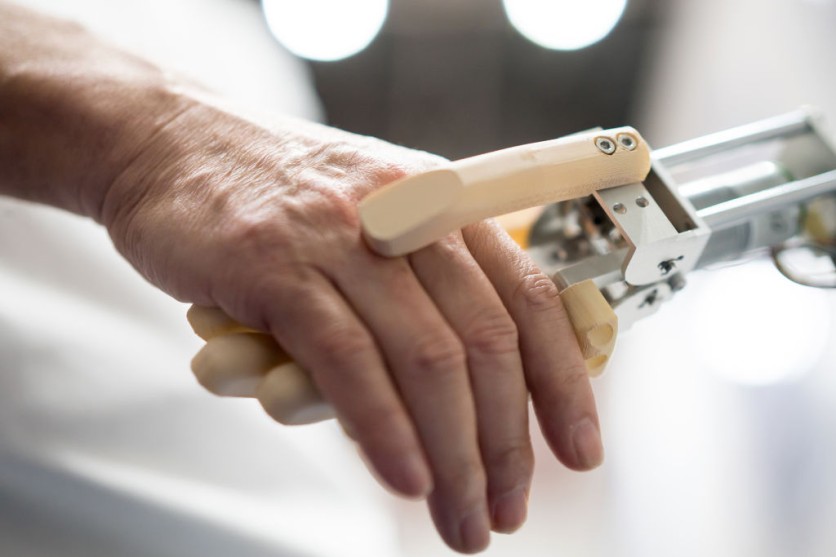Strider, a new robot from Oxford Dynamics, partly supported by the UK's Ministry of Defence, is said to endure severe radiation-heavy environments, taking over tasks in dangerous areas from humans.
As per Interesting Engineering, Strider was developed by Oxford Dynamics using financial support from a £1 million agreement with the UK Ministry of Defence (MoD).
The main goal of the project is to improve safety in environments with chemical, biological, or nuclear hazards, as well as locations at risk of harmful radiation exposure.

(Photo : Tomohiro Ohsumi/Getty Images)
TOKYO, JAPAN - OCTOBER 19: An attendee shakes hands with a robotic arm during the Japan Robot Week 2022 event on October 19, 2022 in Tokyo, Japan. The event showcases service robots and robot manufacturing technology and will be held from October 19 to 21.
The robot can collect contaminated objects, place them in containers, and carry out partially autonomous tasks. By using advanced technologies like infrared, radar, and lidar, it can navigate challenging landscapes.
Oxford Dynamics began working on the design of the Strider robot in November, aiming to hand it over to the UK's Defence Science and Technology Laboratory by September.
Strider utilizes infrared, radar, and lidar technology to operate in difficult and unknown terrains. It is designed to perform duties such as retrieving contaminated objects, placing them in bins, and taking on semi-autonomous tasks that are challenging for humans wearing protective clothing.
Reports have indicated that the robot can perform semi-autonomous functions in remote regions and navigate challenging terrains that are not easily visible to the operator. The company is anticipated to evaluate the advanced AI robot in different common settings.
It is expected that it could be used in the aftermath of incidents such as the 2018 Salisbury Novichok event, in which ex-Russian spy Sergei Skripal and his daughter Yulia were poisoned with a nerve agent.
AI Powered Robot
The company plans to improve Strider's abilities by incorporating its AVIS AI software, a cutting-edge automated visual inspection solution powered by advanced AI technology, transforming the inspection process. It boosts inspections, lowers defect oversights, and greatly cuts down on operational and capital costs.
Transforming Robots
Regarding other developments in the field of robotics, the Humanoid robot 4NE-1 from Neura in Germany is said to have the ability to physically swap its forearms to effectively handle various tasks in both office and household settings, as shown in a recently published video by the company.
The video showcases the robot performing various everyday tasks such as sorting items, moving packages, chopping vegetables, and potentially ironing a t-shirt or shirt.
The edited video showcases 4NE-1's skill in all tasks. However, the specific amount of editing carried out by the robot and the conditions in which it achieved these feats have not been revealed.
The Neura website indicates that the 4NE-1 is a humanoid robot capable of completing a range of everyday tasks and industrial responsibilities.
It should be noted that Neura was able to use Nvidia's available services, models, and computational platforms for developing, teaching, and building upcoming humanoid robots. According to the company, the humanoid robot stands at a height of 5.9 feet (1.8 meters), which is deemed as an average human height.
Furthermore, it weighs around 176 pounds (80 kg) and can easily handle carrying weights of up to 33 pounds (15 kg). One of the many distinct qualities of the humanoid robot is its ability to switch out forearms for different tasks as needed.





